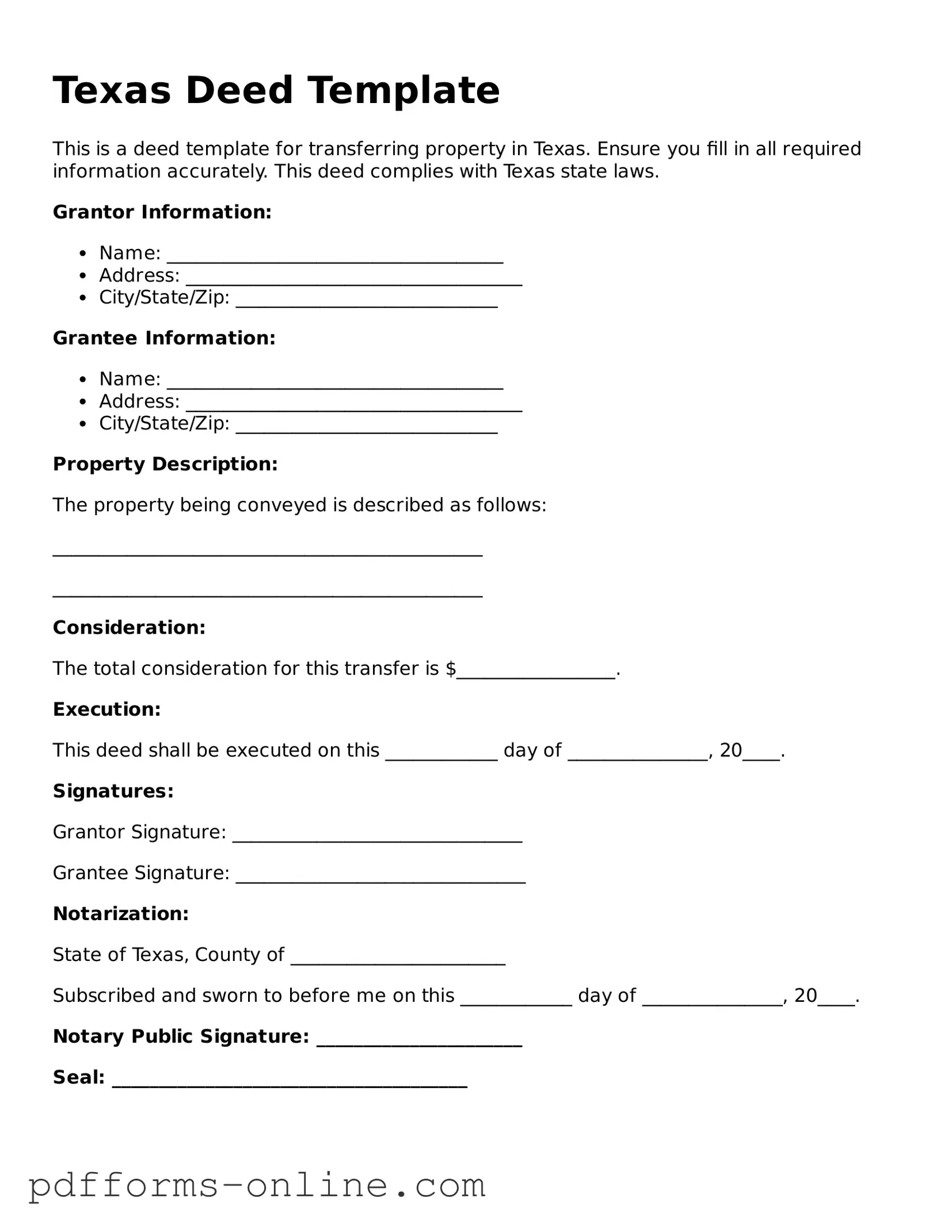Texas Deed Template
This is a deed template for transferring property in Texas. Ensure you fill in all required information accurately. This deed complies with Texas state laws.
Grantor Information:
- Name: ____________________________________
- Address: ____________________________________
- City/State/Zip: ____________________________
Grantee Information:
- Name: ____________________________________
- Address: ____________________________________
- City/State/Zip: ____________________________
Property Description:
The property being conveyed is described as follows:
______________________________________________
______________________________________________
Consideration:
The total consideration for this transfer is $_________________.
Execution:
This deed shall be executed on this ____________ day of _______________, 20____.
Signatures:
Grantor Signature: _______________________________
Grantee Signature: _______________________________
Notarization:
State of Texas, County of _______________________
Subscribed and sworn to before me on this ____________ day of _______________, 20____.
Notary Public Signature: ______________________
Seal: ______________________________________
